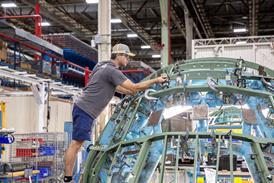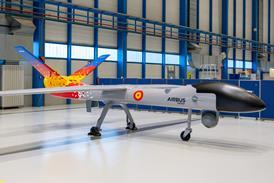Robey Lal, IATA’s new manager in India and a former board member of the Airports Authority of India, explains how years of underinvestment are hampering the country’s air transport market
 It has been years since any significantly sized capacity has been developed at India’s major international airports, Mumbai and Delhi, the two airports that serve nearly 60% of the country’s air traffic.
It has been years since any significantly sized capacity has been developed at India’s major international airports, Mumbai and Delhi, the two airports that serve nearly 60% of the country’s air traffic.
In fact in 2002 the civil aviation ministry prohibited any large capital investment at major airports in the hope that the public-private partnership (PPP) programme would take shape soon. The PPP aims to bring in private companies to help finance some of the country’s much-needed new airport infrastructure. The ban was lifted in 2004 and some works have started. However, major investment is likely only after the PPP programme takes effect.
A milestone in this initiative could be reached shortly, with the civil aviation ministry poised to announce the successful bidders to develop and manage Mumbai and Delhi airports under a PPP.
Mumbai airport had its last major international module (module 2C) commissioned in September 1999, with an area of about 75,000m2 (807,000ft2). At the same time it closed down module 2B, which has an area of about 35,000m2. The old module 2A, commissioned in 1980, is continuing without modification, and module 2B is in the process of being recommissioned with minor changes.
The new Mumbai domestic terminal, terminal 1A, was commissioned in the mid-1990s, and has had a few additional parking bays added in the past few years. A proposal to more than double the size of that terminal was submitted to government by the Airports Authority of India in 1996, but was rejected. In July 2005 a partial expansion of the old domestic terminal 1B was commissioned. The second phase of the expansion is in progress and set to open by mid-2006. These will provide much needed short-term relief.
At Mumbai, eight domestic parking bays, three Airbus A380 parking bays and four bays for smaller international aircraft have been put into service. Also, some much needed taxiway links are under construction. These are expected to reduce delays.
At Delhi, no major expansion of the international passenger terminal, opened in 1986, has taken place. The proposal to develop a facility with an annual capacity of 10 million passengers was submitted in 1996, but was again rejected. One of the domestic terminals is built around facilities dating back to the 1940s. Work to expand this terminal is expected to begin shortly.
Bangalore airport also suffers from a lack of capacity, expansion having been done about 10 years ago. But a new international airport is now under construction and is likely to be enter service in 2009. Similarly, a new international airport in Hyderabad is under construction. Both of these are primarily being developed through private investment, on the model of the airport in Nedumbassery, Cochin, which has been operational for the past six years.
The best-case scenarios for any major work to be completed after the start of the PPP programme at Mumbai and Delhi airports is late 2009 or early 2010, assuming the early selection of the developer and airport operators.
There are also hopes for a new airport for Mumbai, which could be commissioned in about 10 years. ■
ROBEY LAL
Source: Flight International























